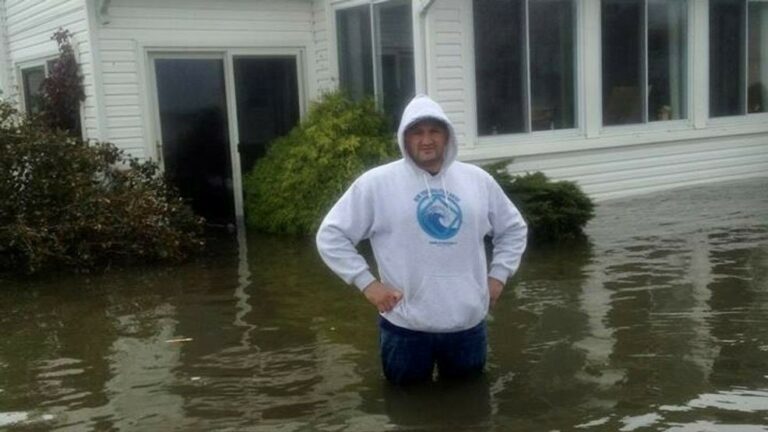Homeowners Face Devastating Reality: Insufficient Insurance Coverage After Disasters
When disaster strikes, many homeowners discover a harsh reality: they lack adequate property insurance to cover all their losses. This issue is emerging as a significant problem, particularly for those affected by recent events like the wildfires in California and hurricanes in the Southeast.

APA Executive Director Doug Quinn standing in front of his New Jersey home after it was flooded by Hurricane Sandy.
North Carolina residents faced unprecedented flooding in the wake of Hurricane Helene. Many homes were left submerged, with some residents spending hours on their roofs awaiting rescue. Six months after the hurricane, many residents are still grappling with the aftermath, only to discover they didn’t have enough insurance to cover their losses.
“No insurance on flood insurance. We had to depend on FEMA,” one resident recounted. “Of course, it’s not enough.”
A recent study from the University of Colorado Boulder revealed that three out of four victims of the 2021 Marshall Fires near Denver were underinsured.
Emily Gallagher, co-author of the study and assistant professor of finance at the University of Colorado, told Spotlight on America that this situation often comes as a surprise. “It can be quite devastating. You’ve just lost your home, you’ve lost just about everything you have, and to realize that you’re going to be relying on charity.”
Gallagher’s research highlights that homeowners often prioritize premiums over coverage limits.
Doug Quinn, Executive Director of the American Policyholder Association (APA), an organization advocating for homeowners on insurance matters, experienced this firsthand. His New Jersey home was severely damaged by Hurricane Sandy in 2012.
“It was devastating. It changed the whole course of my life,”
Following the recent hurricanes in the southeast and wildfires in California, Quinn and his team have been aiding victims, many of whom are just now realizing their insurance inadequacies.“It’s a shock because many people sort of have this belief that I have insurance, everything’s going to be okay,” Quinn said.
Understanding Your Coverage
Insurance policies, while complex, demand careful review. Be sure to scrutinize your policy and understand what is covered, especially when receiving renewal notices each year.
Quinn emphasized, “It’s not just the premium, which is the one thing everybody looks at, but there could be exclusions from coverage. There could be a change in your coverage.”
When setting policy limits, it’s crucial to estimate the replacement cost, not the market value, considering inflation on labor and supplies that can increase costs. Additionally, comparing coverage between insurance carriers is advised, especially given that Gallagher found this to be something many homeowners weren’t doing.
Gallagher noted that cheaper coverage often leads to underinsurance. “When they’re getting that lower premium, it’s partly because they’re being underinsured.”
Online tools can help estimate rebuilding costs, which should be considered when determining coverage. Keep in mind that flood coverage requires a separate policy.
According to FEMA, 99% of counties nationwide have faced flooding, but only around 5% of homeowners have flood insurance.
In the aftermath of disasters, many homeowners struggle with difficult choices.
“They’re forced to make a new set of decisions on what am I going to do? Will I be able to rebuild my home? Do I have to just sell my property at a loss?” Quinn stated. “You will have to go into debt. You’ll have to use your personal savings, your college funds for your children, your retirement money. Hopefully, you’ll be able to apply for some form of federal aid.”
Insurance policies provide different coverage levels based on your choices. It’s important to differentiate between replacement value and actual cash value. Most policies cover the replacement value of your home’s structure up to the policy limit, but contents coverage may require opting for replacement value. Some homeowners choose actual cash value, which is more affordable, but factors in depreciation.
Liability coverage is another critical component, covering lawsuits for injuries or property damage you or your family members cause, including damage from pets.
Gallagher hopes her study will help raise awareness so homeowners can better prepare for the future, and better understand the crucial importance of insurance.
“They’re just learning after the disaster that they’re underinsured, which means they weren’t able to plan for it, and they didn’t prioritize things the way they might have had they realized they were underinsured,” she said.


